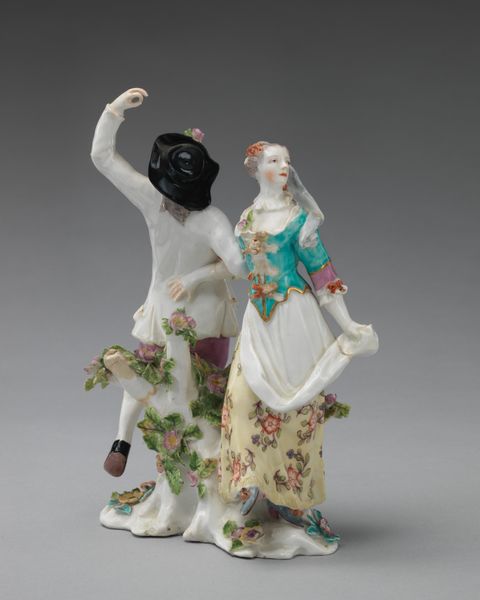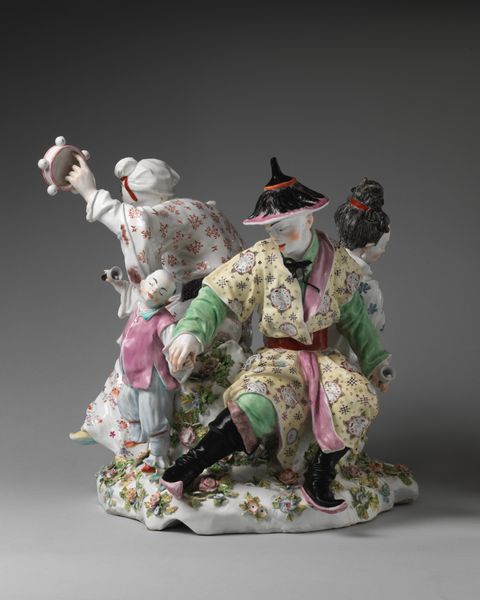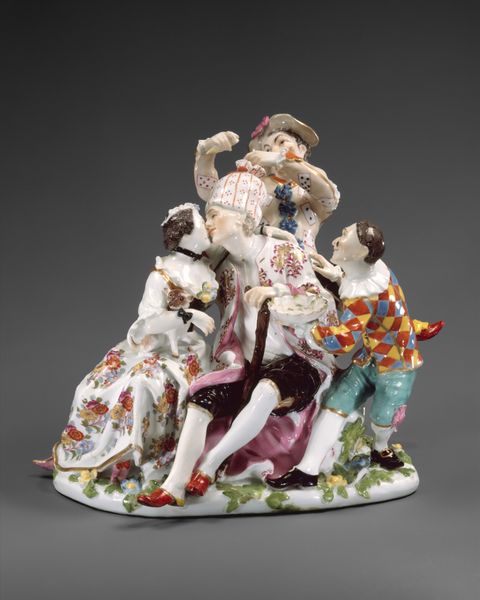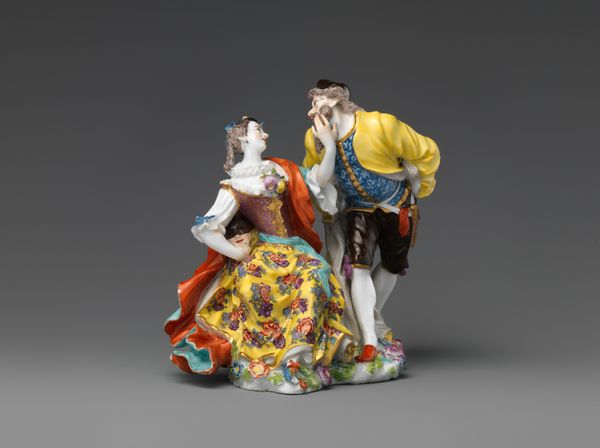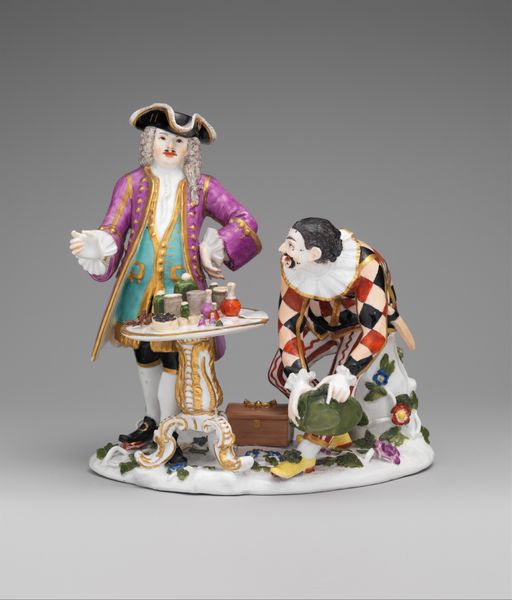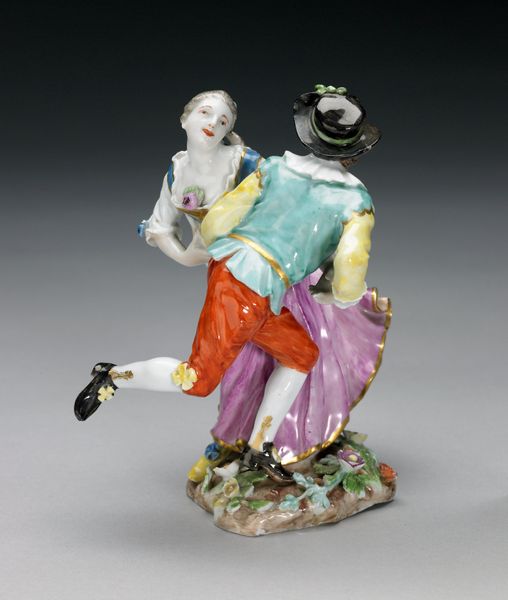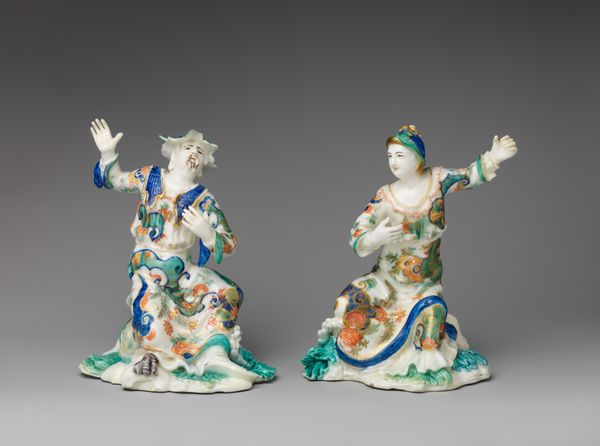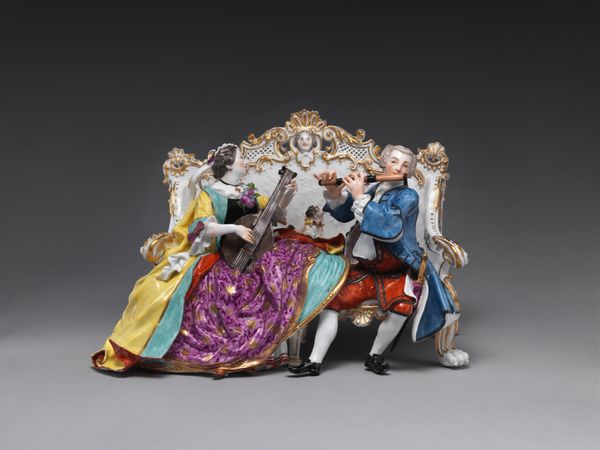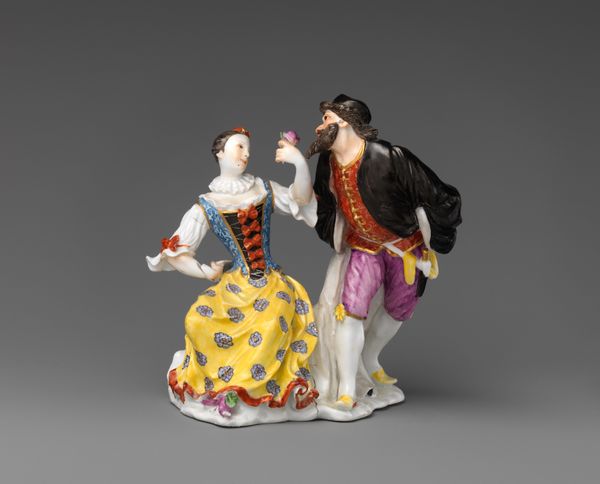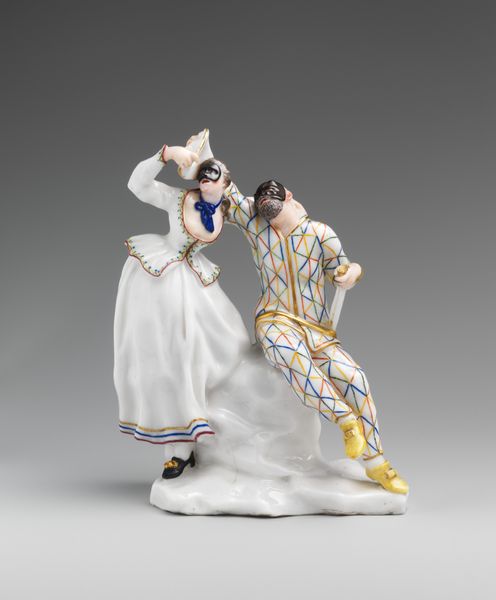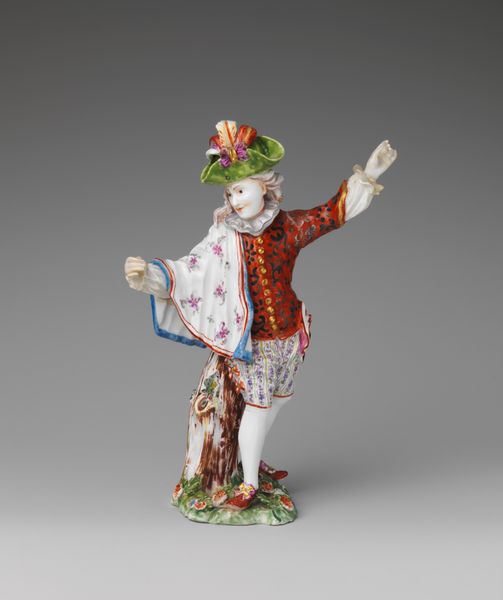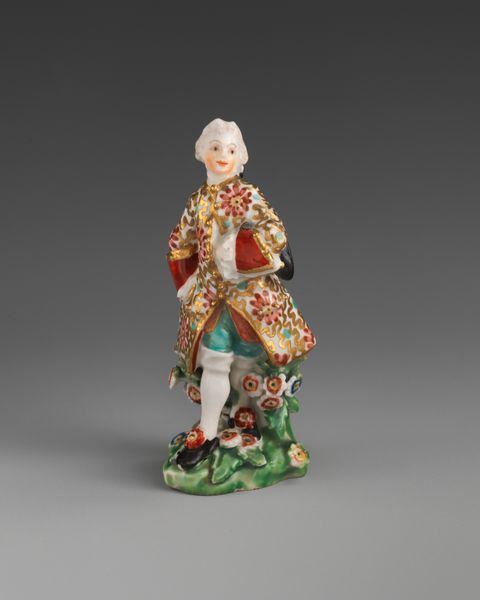
ceramic, porcelain, sculpture
#
ceramic
#
porcelain
#
figuration
#
sculpture
#
genre-painting
#
decorative-art
#
miniature
#
rococo
Dimensions: Overall (confirmed): 7 x 7 13/16 x 4 1/2 in. (17.8 x 19.8 x 11.4 cm)
Copyright: Public Domain
Editor: Here we have "Columbine and Pantaloon," a porcelain sculpture crafted between 1741 and 1744. It’s quite small and incredibly detailed. I’m immediately struck by the almost chaotic arrangement of figures and colors; it feels very dynamic. What stands out to you in terms of form and structure? Curator: Immediately, one notes the dynamic interplay of lines. The curvature of Columbine’s dress is contrasted with Pantaloon's rigid posture. The sculptor has masterfully balanced positive and negative space, creating a visually arresting composition. Editor: I see what you mean about the lines. Do you think the Rococo style amplifies that feeling? Curator: Undeniably. The Rococo revels in asymmetry and ornamental flourishes. Observe the floral patterns adorning the costumes, their function extends beyond mere decoration; they serve as a textural counterpoint to the smooth porcelain, engaging the viewer's eye in a continuous dance across the surface. The colours—how do they strike you? Editor: They’re quite delicate but, like you said, with enough contrast to keep your eyes moving around the sculpture. So how do all those parts build to something more? Is it meant to feel harmonious or... something else? Curator: Harmony isn't necessarily the primary objective. It appears the sculpture explores themes of tension and intrigue. What's your reading of the expressions of each character? It seems a very important formal clue. Editor: They are kind of mischievous. So even in a static medium, this work conveys a lively narrative? Curator: Precisely! This work transcends its medium, utilizing its material qualities, its structure and use of ornament, to suggest character and propel narrative. Editor: Thinking about it structurally really opens it up. Thank you!
Comments
No comments
Be the first to comment and join the conversation on the ultimate creative platform.
